July 13, 2012
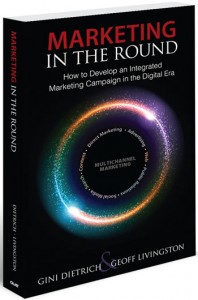 You know those people who modify who they are, based on who’s around or where they are? They behave one way at work, one way on Friday nights and another way on Sunday mornings. I think it’s difficult to trust people who don’t live one, integrated life.
You know those people who modify who they are, based on who’s around or where they are? They behave one way at work, one way on Friday nights and another way on Sunday mornings. I think it’s difficult to trust people who don’t live one, integrated life.
We react the same way to brands and companies. Part of what creates a sense of trust for us as consumers is consistent, integrated behavior.
That’s why I’m recommending you check out a book called Marketing in the Round by Geoff Livingston and Gini Dietrich. (click here to buy*)
It’s not about social media. Or new (or old) media. It’s media agnostic. No matter what media you use (and you should use several) it’s about weaving them together so they are all stronger.
I got a chance to ask author Geoff Livingston a few questions and think his answers will give you a good sense of what the book might offer you and why I think it’s a must read.
If you had to describe the content of your book in a single sentence (no run ons) what would it be?
GL: Somewhat conservative methods to approach integrated multichannel marketing in the digital era.
What one book that you’ve read do you wish you could claim as your own?
GL: Oh man, if I could only claim From Good to Great as my own!
In your opinion, what is the one trait that all uber successful business people possess?
GL: Tenacity. We all face trials and failure, but successful people in all walks of life get up and move forward. Successful business people usually find a new way or approach to make their original idea work.
What’s the biggest business mistake you’ve ever made and what did you learn from it?
GL: Naming my company after myself. I think Livingston Communications had the right premise – social media boutique – at the right time 2006-9, but was limited by its ties to me. I could not sell accounts and have other people service them very easily. Also, it was harder to attract top senior talent.
If I was smarter, I would have insisted on a different name that would have made scaling easier. I have learned this lesson in other ways since then, too. I’ll never build a multi-person business again that revolves solely around a singular personality.
Why did you have to write this book? What truth or insight was missing from the human consciousness — that you’ve now answered?
GL: I don’t know if my co-author Gini Dietrich and I made a difference in the human consciousness, but I do think we restored some basic integrated marketing values to the general conversation.
Social media dominates marketing publishing titles for past five years to the point that the sector has grown myopic. Ask most CMOs which tactics are driving ROI, and almost all of them will say direct marketing, not social media.
It’s not that social media is a bad thing. Fractured interactive media have produced these very important eddies of conversations for businesses. At the same time, no one person I know consumes only social media.
We need a more holistic picture. I think this book has redirected the conversation in some ways towards that comprehensive view.
After someone is done reading your book — what do you hope they do as a result?
Step back and think from the stakeholder’s perspective. And if they do, they may use the same marketing tactics, but they should be more inclined to make them work together to better serve people.
*Affiliate link
More
 I had a few little electrical projects that needed to be done around the house. So I turned to my Angie’s List favorites.
I had a few little electrical projects that needed to be done around the house. So I turned to my Angie’s List favorites.

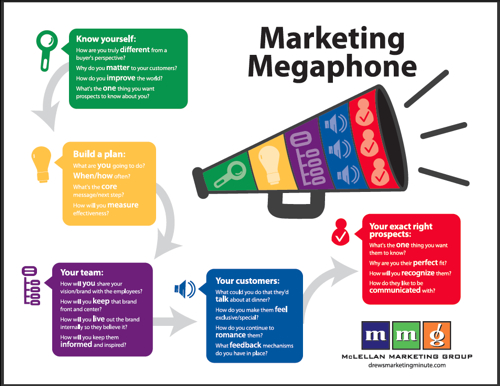

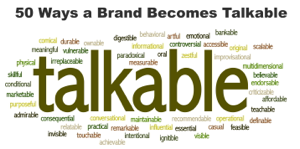

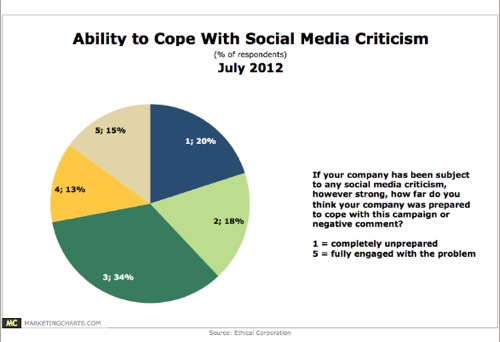








 Blogs, once described as the vehicle for narcissistic over sharers and people who found cats amusing, have certainly come into their own.
Blogs, once described as the vehicle for narcissistic over sharers and people who found cats amusing, have certainly come into their own.
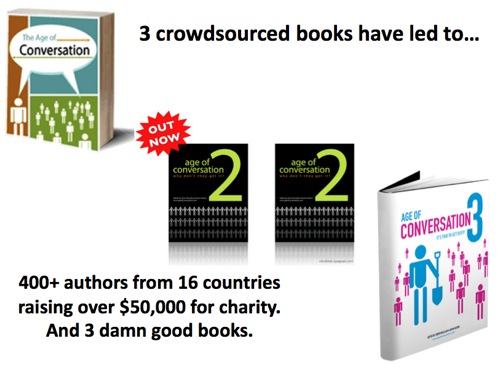

 I’ve been in several conversations with clients and other business owners of late all surrounding the issue of creating urgency in potential buyers.
I’ve been in several conversations with clients and other business owners of late all surrounding the issue of creating urgency in potential buyers.